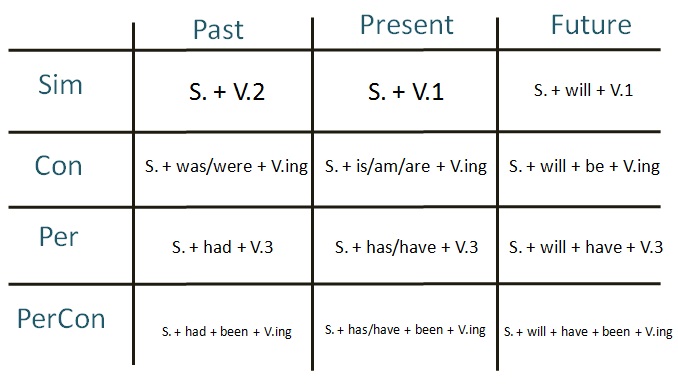Indirect speech
Indirect Speech - Statement หรือ ประโยคบอกเล่าในรูปแบบของ Indirect Speech
หลักการเปลี่ยนจากประโยค Direct Speech เป็น Indirect Speech
1. นำเครื่องหมายคำพูด (Quotation Marks (“…”)) และ comma (,) ออก
2. เปลี่ยน says เป็น says that
say to เป็น tell
said เป็น said that
said to เป็น told
said เป็น said that
said to เป็น told
3. เราสามารถที่จะเติม “that” หลัง Reporting Verbs หรือไม่ก็ได้
4. เปลี่ยนสรรพนามให้สอดคล้องกับประธานหลักของประโยค
5. เปลี่ยนคำระบุเวลาต่างๆ และ เปลี่ยนคำที่เป็นระยะ ใกล้ ให้เป็น ไกล เช่น
Direct Speech: He said, “I bought this house 2 years ago.”
Indirect Speech: He said (that) he bought that house 2 years before.
Direct Speech
|
Indirect Speech
|
Ago
|
before, earlier
|
a year/month ago
|
a year/month before, the previous year/month
|
last… (night/week/moth/year)
|
the…before, the previous…
|
next… (night/week/moth/year)
|
the following…
|
Now
|
then, at that time
|
the day before yesterday
|
two days before
|
the day after tomorrow
|
Later in two days time, two days late
|
Today
|
that day
|
Tomorrow
|
the following day, the next day
|
Tonight
|
that night
|
Yesterday
|
the day before, the previous day
|
Here
|
there
|
These
|
those
|
This
|
that
|
6. เปลี่ยน Tense ให้เข้ากับ Reporting Verbs ซึ่งมีวิธีการเปลี่ยน ดังนี้
- หากกริยาใน Direct Statement อยู่ในรูปของ Present Tense เราไม่จำเป็นต้องเปลี่ยนแปลงTense ใน Indirect Statement อย่างไรก็ตาม เราจะต้องเปลี่ยนรูปกริยาตามประธานในประโยคนั้นๆ เช่น
Direct Speech: He says, “I like you.”
Indirect Speech: He says (that) he likes me.
- หากกริยาใน Direct Statement อยู่ในรูปของ Past Tense เราจะต้องเปลี่ยนแปลง Tenseใน Indirect Statement ดังนี้
Direct Speech
|
Indirect Speech
|
Present simple Tense
|
Past simple Tense
|
Present continuous Tense
|
Past continuous Tense
|
Past simple Tense
|
Past perfect Tense
|
Past Continuous Tense
|
Past Perfect Continuous Tense
|
Present perfect Tense
|
Past perfect Tense
|
Future simple Tense (will)
|
Future in past forms Tense (would)
|
Can
|
Could
|
May
|
Might
|
Shall
|
Should
|
Must
|
Had to
|
6.1) เปลี่ยนจาก Present Simple Tense เป็น Past Simple Tense เช่น
Direct Speech: Sarah said, "I like Science."
Indirect Speech: Sarah said (that) he liked Science.
6.2) เปลี่ยนจาก Present Continuous Tense เป็น Past Continuous Tense เช่น
Direct Speech: She said, "I am not shouting."
Indirect Speech: She said (that) she was not shouting.
6.3) เปลี่ยนจาก Present Perfect Tense เป็น Past Perfect Tense เช่น
Direct Speech: John said, "I have finished my homework."
Indirect Speech: John said (that) he had finished his homework.
6.4) เปลี่ยนจาก Past Simple Tense เป็น Past Perfect Tense เช่น
Direct Speech: Jake said, "I cleaned the kitchen."
Indirect Speech: Jake said (that) he had cleaned the kitchen.
6.5) เปลี่ยนจาก willเป็น would เช่น
Direct Speech: I said, "I will wait for you."
Indirect Speech: I said (that) I would wait for you.
6.6) เปลี่ยนจาก shall เป็น should เช่น
Direct Speech: They said, "We shall go to the supermarket."
Indirect Speech: They said (that) they should go to the supermarket.
6.7) เปลี่ยนจาก can เป็น could เช่น
Direct Speech: George and Sarah said, “We can help you."
Indirect Speech: George and Sarah said (that) they could help me.
6.8) เปลี่ยนจาก may เป็น might เช่น
Direct Speech: He said, "I may not be home tonight."
Indirect Speech: He said (that) he might not be home tonight.
6.9) เปลี่ยนจาก must เป็น had to เช่น
Direct Speech: The doctor said, "You must stop smoking."
Indirect Speech: The doctor said (that) I had to stop smoking.

